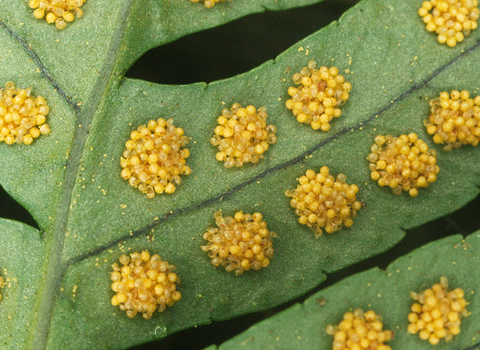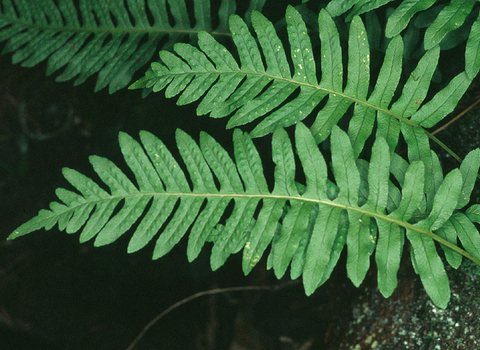Common polypody
The common polypody is a hardy fern of damp, shady places in woodlands. It also makes a good garden fern. It has ladder-like, leathery foliage with pimply undersides - these spots are the spores.
Enw gwyddonol
Polypodium vulgarePryd i'w gweld
January to DecemberSpecies information
Category
Ystadegau
Height: 30cmCommon.

